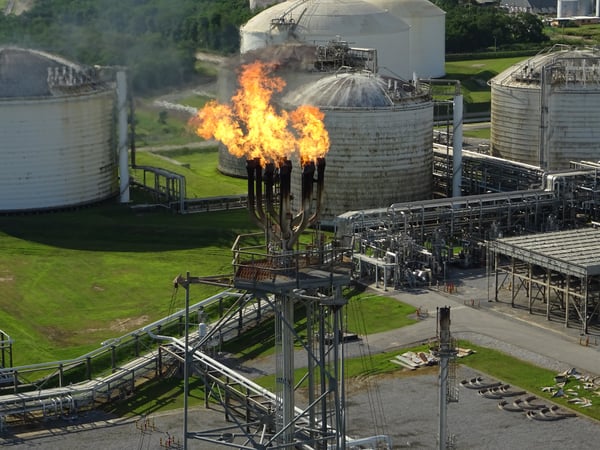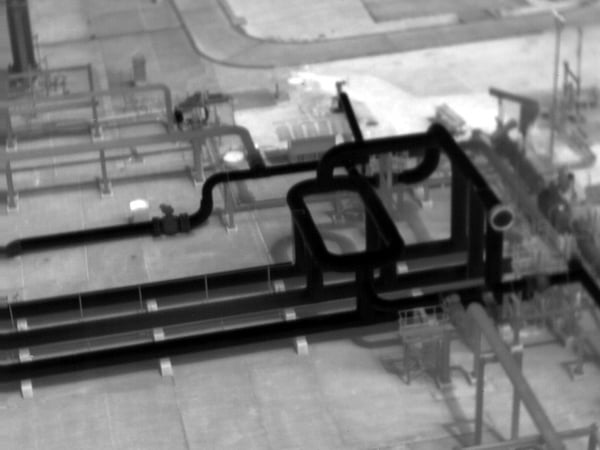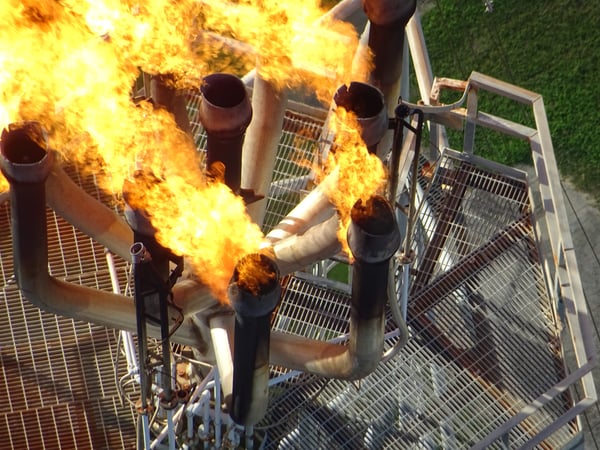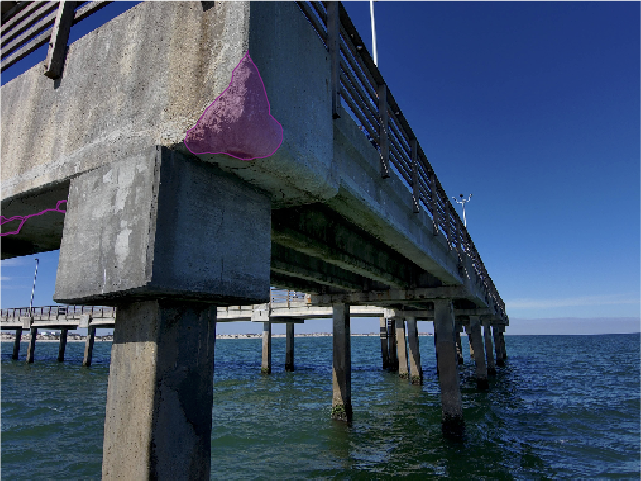Drones and other emerging technologies have the potential to transform how manufacturing and service industries operate and maintain their assets. The UAV devices are enabling companies to perform safer, quicker and less costly aerial inspections and surveys.
In particular, the oil and gas companies are increasingly using UAV technology and other emerging technologies such as big data, AI and robotics to address a wide range of challenges. This allows them to carry out safe and cheaper aerial surveys and inspections, hence maintain their facilities at reduced costs and risks.
Already, companies using these emerging technologies are realizing several benefits. In addition to collecting comprehensive and better data, the drones are enabling the oil and gas companies to perform frequent, faster and safer inspections.
Generally, the drones require less preparation and inspection time compared to the labor-intensive methods. This is applicable to both the scheduled and ad hoc inspections and surveys.

Where to begin using drones in oil and gas industry
When it comes to deployment, drones are applicable in the three major areas in the oil and gas industry. The companies can use them in upstream, midstream and downstream operations.
- Upstream tasks include surveying and mapping potential and existing onshore and offshore oil wells and rigs.
- Midstream activities include inspecting pipelines, checking for underwater leakages, corrosion, and other defects, as well as monitoring construction activities and more.
- Downstream processes include surveillance of the facilities and pipelines
Today, oil and gas companies are increasingly using drones to reduce risks and costs while improving productivity by minimizing failures and shutdowns. The technology gives the oil companies;
Surveying and inspecting oil wells and rigs
Drones can provide a wide range of useful information from the oil wells and rigs during exploration and drilling stages. The drone based surveys help to reduce the time and money that the traditional methods take while giving the companies the ability to gather and view a wide range of data in real time. This makes it easier to even re-check any point of interest and which can be repeated from the same spot and angle as many times as possible – something impossible using manual methods.
In addition, the drone will ease the work of identifying the site for the oil drilling facilities, routes and other supporting infrastructure and make it faster and better than manual approaches. They can further continue inspecting the facility during the construction and even after it starts operating.
Benefits of drone monitoring and inspections include the ability to carry out the exercise without shutting down operations and improved safety.
Unlike the traditional methods where human workers need to climb structures such as flares stacks and storage tanks, the drone can provide images and other data from close distances while the facility is still in operations. This saves on costs, reduces risks and prevents expensive shutdowns. In addition, timely and accurate information helps the companies to maintain their structures and facilities hence help prevent failures and disasters.
Monitoring exploration and construction sites and activities
Oil and gas companies can use drones to monitor the activities in the exploration and construction sites. During the construction phase for the wells, rigs, refineries, pipelines and other infrastructure components, the drones can provide almost real-time monitoring and provide managers in the office with up to date construction progress reports.
This will also help them determine if they are still on schedule and if there is a need for additional resources. In addition, the drones enhance the security of the construction sites. Aerial inspections can also help the designers to establish if the construction is going on as per design, hence an opportunity to correct or address any deviations, safety issues or defects in good time.
The technology enables all the stakeholders to access and view the status of the structures whether under construction or operation from anywhere. This enables the professionals on site to collaborate with others in offices or remote locations, hence supporting a better decision making the process.
Once complete, the company can then use drones inspection software to gather the images of the actual structure, and then generate a 3D representation that they can use as a reference.

Inspecting and monitoring pipeline
Drones improve the field maintenance activities by pinpointing the exact problem areas on the pipelines in addition to determining if there are issues with the surrounding environment. Using aerial photo and thermal imaging the drones provides an easier and quicker means of identifying where the problems are while providing adequate information that allows the ground crews to prepare well before going to fix the problem.
Different sensors allow the teams to measure various parameters. For example, the infrared thermal cameras will reveal hotspots which are usually signs of leaks, pipe corrosion, insulation breakdown, or other faults that may be invisible to the human’s eye.
In addition, a quick survey along the pipeline route will also establish if there are any encroachment, spills and other anomalies that affect the pipes or surrounding environment.
Benefits include safer inspections, cost reduction, faster inspections, better data and more. This allows the companies to conduct aerial inspections any time, and access the information in real-time hence detect and address the faults in good time before leaks, spills and other problems happen.
How drones help operations in the oil and gas industry
Drones are generally ideal for carrying out visual inspections of structures in the oil and gas industry and have the benefit of collecting comprehensive data from almost any location including difficult to reach areas.
In addition to reducing inspection costs and risks, the drones enable the companies to comply with the various regulatory requirements and standards. Getting timely inspection data enables the maintenance managers to address any existing and potential problems hence prevent failure, accidents, and expensive shutdowns. In addition, detecting potential leakages and spill hot spots before they happen gives the company an opportunity to can fix them before they start damaging the environment.
The main benefits of drones in the oil and gas industry include;
Ability to uncover issues invisible to the human eye
Using a wide range of sensors on and analytics software drone, companies are able to gather comprehensive data and insights into the status of the onshore and offshore facilities. This provides much better information compared to using traditional manual methods where people are likely to miss out on some details. Also, advanced sensors on the drones have the ability to see things that humans cannot see with naked eyes.
The UAVs can access locations that human workers cannot access hence gather detailed data from very close distances. Other than collecting a wide range of critical data, the drones operations are repeatable. This allows the operators to conduct a similar inspection or survey from eth exact locations and angle hence have the ability to compare the status of a particular area.
Reduce inspection costs
The traditional manual inspections of oil wells and other facilities are not only time consuming but also costly. The labor-intensive activities rely on heavy equipment, manned aircraft, and ground vehicles. It also requires the field teams to physically go near the infrastructure such as pipelines to look for leaks and invasive vegetation. This approach is usually expensive and may be inefficient at times. The manual methods require more manpower, and because of the high risks, there are higher insurance costs.
Also, the labor, heavy equipment, long periods, shutdowns, and other issues end up driving up the cost of traditional inspections. This means that the organizations can only afford a few of these per year, and this will expose them to risks so failure and safety issues.
Unlike the manual methods, the drone-based inspections are usually much faster, cheaper and require a smaller number of workers.
By adding the appropriate sensors and other technologies to the drones, the devices are able to automatically gather a wide range of data and relay it to the relevant people. Also, uploading the information to the cloud enables all stakeholders to access the data almost in real time, collaborate and make better decisions that help to reduce breakdowns, improve operations and efficiency.

Improve productivity
Drones have the ability to capture greater amounts of data. Integrating them with several different types of sensors enables them to conduct multiple inspections simultaneously while collecting extensive data from the assets. Further, the companies can conduct the survey at any time and provide the operators with vital data in real-time. The comprehensive and timely data enables better data-driven decisions, as well as a prompt response or remedial action to any issues. Other than addressing faults or impending issues, companies can use special drone analysis software tools to discover trends in addition to improving their future operations.
Generally, the drones help the oil and gas companies to improve maintenance, save time and money while reducing failures and downtimes.
Conclusion
Today, the drones have become vital components of aerial inspections that are transforming how oil and gas companies operate and maintain their assets. The drone-based inspections and monitoring allows the companies to easily detect failures, potential problems, spills and other issues arising from broken infrastructure.
Reducing human intervention minimizes the potential risks and dangers that employees may face in hazardous environments. The devices, together with other technologies provide better and accurate risk assessments at lower costs as compared to traditional methods where workers need to inspect and perform other testing tasks physically and manually.
Tags
Oil and Gas

.png)
